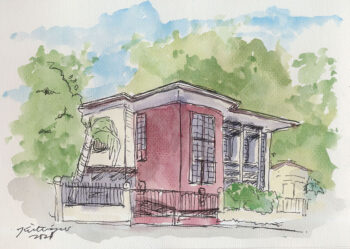BANSALAN, Davao del Sur (MindaNews / 23 March) – Farmers from the hinterland Purok Pluto, Sitio Balutakay in Bansalan, Davao del Sur have been reviving their coffee plantations after almost decades of hiatus for lack of local market demand.
Ariel Dubria, member of the board of the Balutakay Coffee Farmers Association (BACOFA), said that coffee trees were totally banished in their community in the 1980s and then replaced with vegetables to earn the farmers a living.
He said they started growing coffee trees again following a resurgence of local demand in early 2000 but the progress is barely even half, explaining that the preceding growers were as not receptive to government and non-government support.
Around 60 farmers are engaged in coffee farming, with at least 50 hectares estimated to have been planted with Arabica coffee trees. Each hectare has around 1,800 to 2,000 trees.
“Some of the farmers before would hide if there were NGOs visiting us here. So when we took over, we really make sure to get every single opportunity to avail of the assistance…We planted coffee again because there was a stable market in 2000 up to now. The cost to produce vegetables was also very expensive,” he said.
The community is located 400 to 1,000 meters above sea level at the foothills of Mt. Apo.
Dubria said the downside of vegetable farming is that they would always plant after harvest. Unlike coffee, the farmers will just have to wait until the next harvest season.
Some of the non-profit organizations who came to help them get back on their feet are the Kapwa Upliftment Foundation, Inc., Catholic Relief Service, and ACDI-VOCA of the US Department of Agriculture. They have offered support for farm inputs, technical assistance, and marketing.
He said they are also among the beneficiaries of ACDI-VOCA’s Mindanao Productivity for Agricultural Commerce and Trade (MinPACT), an $8-million project that seeks to “increase agricultural productivity and trade in Western and Southern Mindanao. Cocoa, coconut, and coffee farming families in these areas will benefit from higher yields and product quality, as well as better access to services and markets.”
He said they also underwent trainings on good husbandry and post-harvest processing from the best of the lot in world’s best coffee-producing countries Ethiopia in Eastern Africa and Colombia in South America.
“Our coffee passed the taste and quality standards of the cupper from Colombia,” Dubria said.
Harvest peaks between October to January, which yield the farmers around 10 to 20 metric tons of dried coffee beans, he said.
